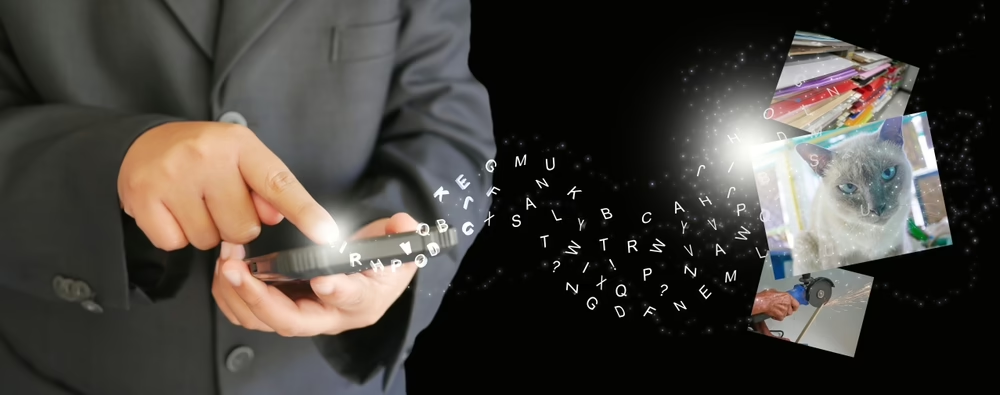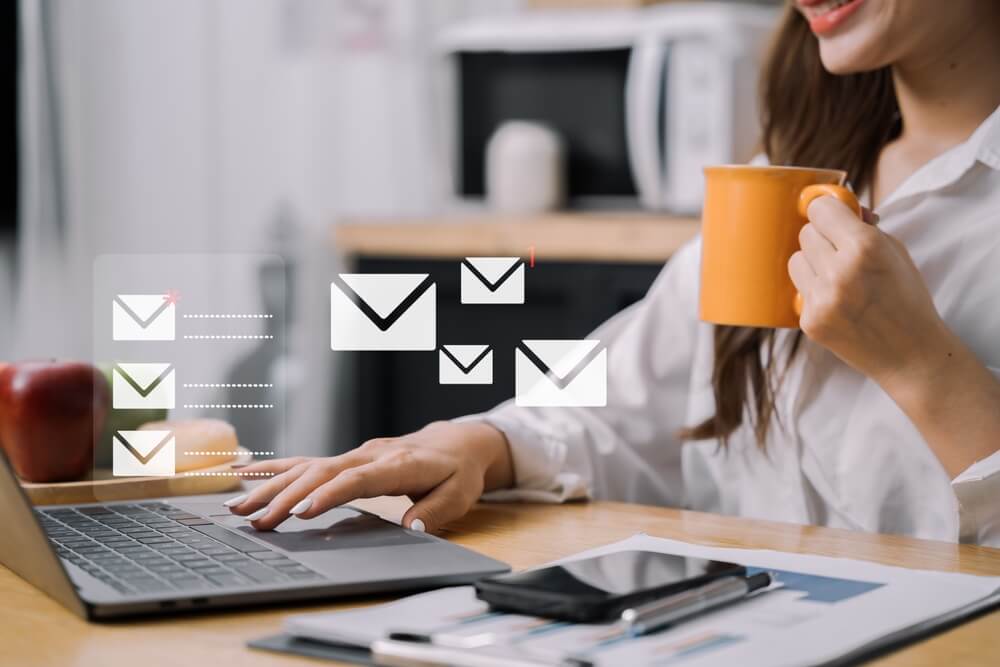
Craft the Perfect Follow-up to a B2B Email Marketing Lead
A follow-up email strategy is vital for lead generation in business-to-business (B2B) marketing. It nurtures relationships and guides potential clients through the sales funnel. It addresses queries and tailors communication based on prospect interactions, fostering trust and credibility.
Convert leads into customers by maintaining engagement and demonstrating a commitment to understanding and meeting their needs with a follow-up email.
This guide focuses on creating follow-up B2B email marketing strategies with these tips:
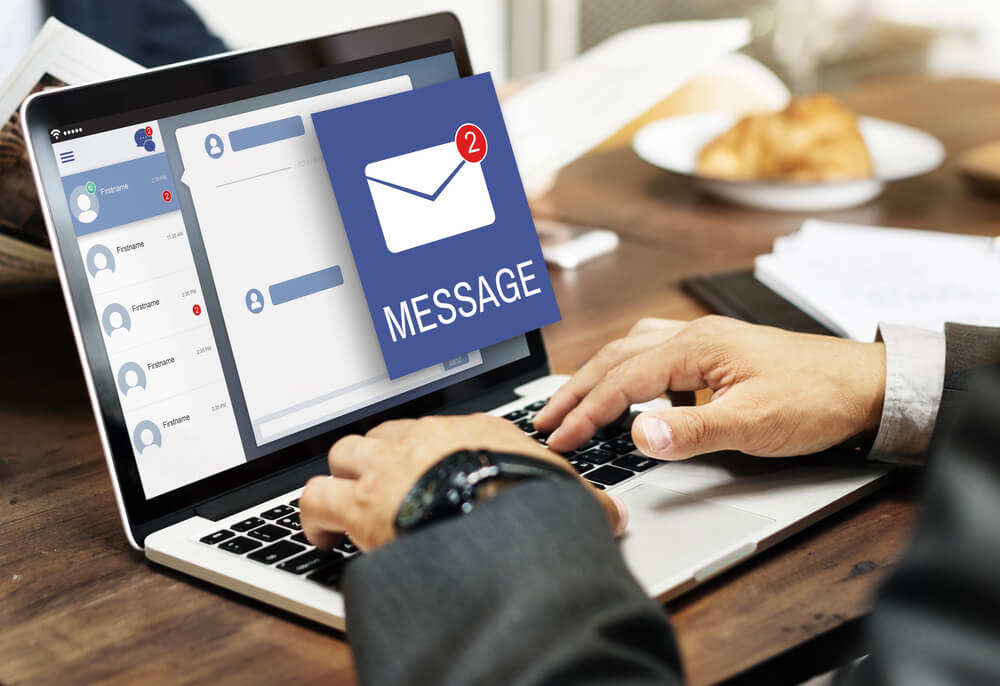 Avoid the most common email marketing mistakes with personalized messaging. It improves your connection with B2B leads and demonstrates a genuine understanding of their needs and interests.
Tailored communication also increases engagement, relevance, and content value. The unique and valuable user experience resonates with your leads.
Personalize B2B follow-up emails with the following tactics:
Avoid the most common email marketing mistakes with personalized messaging. It improves your connection with B2B leads and demonstrates a genuine understanding of their needs and interests.
Tailored communication also increases engagement, relevance, and content value. The unique and valuable user experience resonates with your leads.
Personalize B2B follow-up emails with the following tactics:
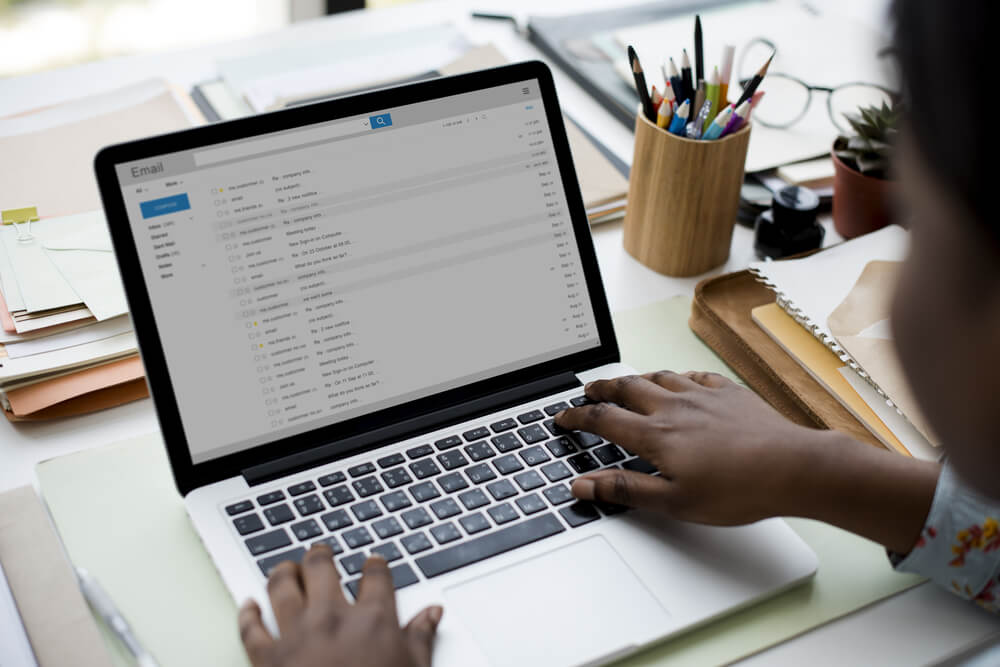 Addressing specific concerns or questions in follow-up emails demonstrates attentiveness and a genuine commitment to understanding the prospect’s needs. It also builds trust and credibility.
Here are the best practices when addressing questions in a follow-up B2B email:
Addressing specific concerns or questions in follow-up emails demonstrates attentiveness and a genuine commitment to understanding the prospect’s needs. It also builds trust and credibility.
Here are the best practices when addressing questions in a follow-up B2B email:
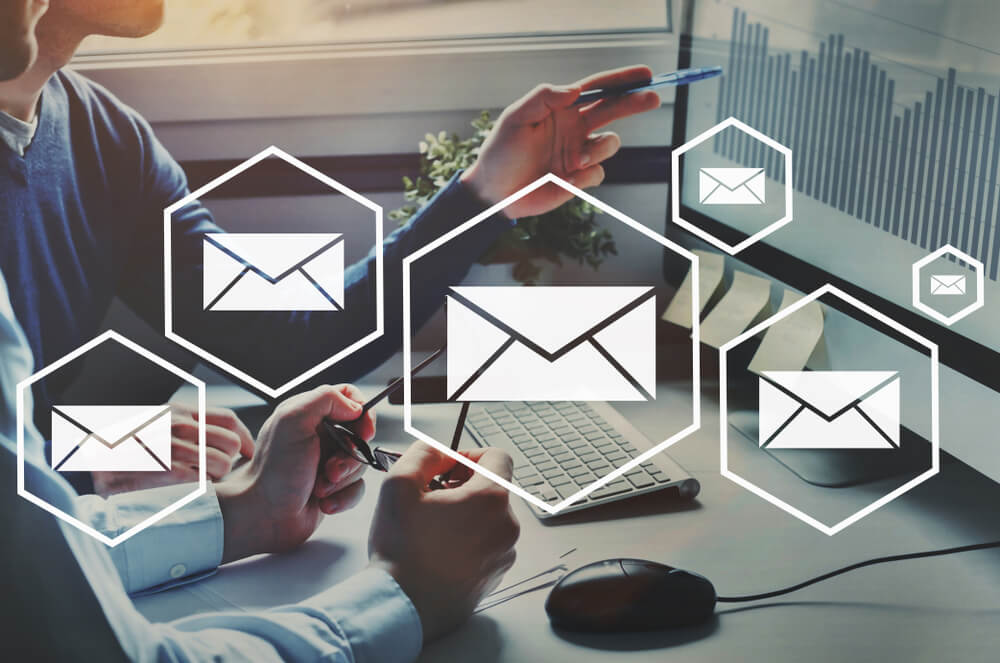 Automating follow-up sequences promotes consistency and timely communication throughout the customer journey. It also personalizes messaging and optimizes engagement based on the lead’s behavior.
Integrate technologies such as artificial intelligence and machine learning into follow-up campaigns with these ideas:
Automating follow-up sequences promotes consistency and timely communication throughout the customer journey. It also personalizes messaging and optimizes engagement based on the lead’s behavior.
Integrate technologies such as artificial intelligence and machine learning into follow-up campaigns with these ideas:
- Provide a timely response.
- Personalize the messaging.
- Provide value-added content.
- Address specific concerns or questions.
- Propose a next step.
- Implement automated follow-up sequences.
Tired of investing in Search Engine Optimization without getting any results? See how Digital Authority Partners turns that around!
1. Provide a Timely Response
A timely response is essential when crafting the perfect follow-up to a B2B email lead because it capitalizes on the prospect’s current level of interest and engagement. Delays often result in missed opportunities or diminished enthusiasm. The following are techniques to improve follow-up email response times:- Implement automated response systems that instantly acknowledge lead interactions.
- Use tools and systems that monitor income leads 24/7. Set up real-time alerts to notify your team of new leads.
- Develop flexible, customizable response templates for common inquiries or interactions.
- Integrate chatbots into the website or email campaigns to provide instant responses.
- Define and adhere to service-level agreements for response times. Clearly outline the maximum time allowed for responding to leads based on their nature and complexity (e.g., inquiries or demo requests).
2. Personalize the Messaging
 Avoid the most common email marketing mistakes with personalized messaging. It improves your connection with B2B leads and demonstrates a genuine understanding of their needs and interests.
Tailored communication also increases engagement, relevance, and content value. The unique and valuable user experience resonates with your leads.
Personalize B2B follow-up emails with the following tactics:
Avoid the most common email marketing mistakes with personalized messaging. It improves your connection with B2B leads and demonstrates a genuine understanding of their needs and interests.
Tailored communication also increases engagement, relevance, and content value. The unique and valuable user experience resonates with your leads.
Personalize B2B follow-up emails with the following tactics:
- Segment data based on specific characteristics or behaviors, such as locations, company sizes, and job roles.
- Study different types of follow-up email examples.
- Implement dynamic content to personalize greetings, recommendations, or specific offers based on the recipient’s previous interactions or characteristics.
- Set up behavioral triggers that initiate personalized follow-ups.
- Craft subject lines and salutations incorporating the lead’s name or reference to their company.
- To inform follow-up, leverage data from previous interactions, such as webinar attendance or content downloads.
- Integrate social media insights into the follow-up strategy. Tailor your messaging based on the prospect’s social media activity and preferences. This enhances the benefits of email personalization.
3. Provide Value-Added Content
Value-added content positions the business as a valuable resource and thought leader. Offering content that educates, informs, or solves specific challenges significantly enhances the user experience. Valuable content strengthens the brand identity and keeps the lead engaged with consistent meaningful insights. All these benefits increase the likelihood of conversion. Consider these value-packed content types for follow-up B2B emails:- In-depth guides or whitepapers that delve into industry trends, best practices, or solutions to common challenges
- Exclusive webinars or virtual workshops that tackle topics relevant to the prospect’s interests
- Case studies or success stories highlighting how your products or services have helped similar businesses
- Customized industry reports or analyses
- Curated content newsletters featuring industry news, articles, and insights
- Interactive tools or assessments that allow leads to evaluate their current challenges or opportunities
- Localized content for geo-oriented campaigns
4. Address Specific Concerns or Questions
 Addressing specific concerns or questions in follow-up emails demonstrates attentiveness and a genuine commitment to understanding the prospect’s needs. It also builds trust and credibility.
Here are the best practices when addressing questions in a follow-up B2B email:
Addressing specific concerns or questions in follow-up emails demonstrates attentiveness and a genuine commitment to understanding the prospect’s needs. It also builds trust and credibility.
Here are the best practices when addressing questions in a follow-up B2B email:
- Develop detailed response templates that comprehensively address common concerns or questions.
- Anticipate potential concerns based on the lead’s industry, challenges, or previous interactions.
- Offer interactive Q&A sessions or virtual meetings where leads can directly ask questions and receive real-time responses.
- Include FAQ sections within your follow-up emails or on the website.
- Assign specific account managers or representatives to high-value leads.
- Implement surveys or feedback forms to gather insights on the lead’s concerns or challenges.
5. Propose a Next Step
Proposing a next step is vital in crafting the perfect follow-up to a B2B email lead. It provides a clear and structured path forward in the sales process. Outlining subsequent actions guides them toward a more defined engagement and a smoother buyer’s journey. A proactive approach demonstrates your commitment to advancing the relationship and streamlines the lead generation process. Craft a next-step plan for follow-up emails with these options:- Create customized action plans based on the lead’s specific needs and interests. Align the tailored sequences with their unique challenges.
- Include clear and compelling calls to action (CTAs) in the follow-up emails to guide the lead toward the next logical step in the engagement process.
- Offer interactive product demos or presentations as the next step in the follow-up process.
- Propose a consultation or discovery call to delve deeper into the lead’s needs.
- Provide leads access to exclusive content or trial versions of products and services.
6. Implement Automated Follow-Up Sequences
 Automating follow-up sequences promotes consistency and timely communication throughout the customer journey. It also personalizes messaging and optimizes engagement based on the lead’s behavior.
Integrate technologies such as artificial intelligence and machine learning into follow-up campaigns with these ideas:
Automating follow-up sequences promotes consistency and timely communication throughout the customer journey. It also personalizes messaging and optimizes engagement based on the lead’s behavior.
Integrate technologies such as artificial intelligence and machine learning into follow-up campaigns with these ideas:
- Set up behavioral triggers within the automated sequences to respond dynamically to the lead’s actions.
- Design drip campaigns that gradually increase engagement over time. Start with introductory content and progressively offer more in-depth resources, aligning with the lead’s progression through the sales funnel.
- Use personalization tokens to dynamically insert lead-specific details such as company names or recent interactions into the follow-up emails.
- Implement A/B testing within the automated sequences to continuously optimize messaging and content. Test different subject lines, content variations, or CTAs to identify what resonates best with the audience.
- Integrate dynamic content based on lead segmentation within the automated sequences. Customize content blocks or sections to cater to different segments’ needs or characteristics.
- Incorporate lead scoring into your automated follow-up sequences. Assign scores based on various interactions and behaviors to prioritize and customize lead follow-ups.
Summing Up
Crafting the perfect follow-up to a B2B email marketing lead involves a timely response to capitalize on engagement, personalized messaging to establish a connection, and value-added content to position the business as an industry authority. Addressing specific concerns or questions demonstrates attentiveness, while proposing further action guides leads through a structured sales journey. Lastly, implementing automated follow-up sequences promotes consistency, systematically nurtures leads, and enhances the overall effectiveness of the engagement strategy. Do you need help in your B2B follow-up campaigns? Contact Digital Authority Partners (DAP), an award-winning email marketing agency, today and schedule a free consultation.Want To Meet Our Expert Team?
Book a meeting directly here

